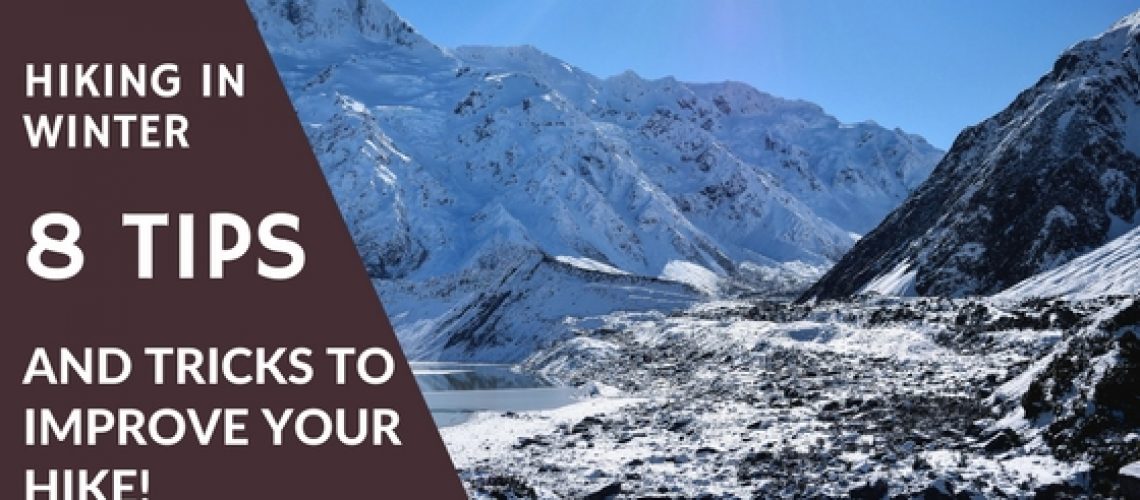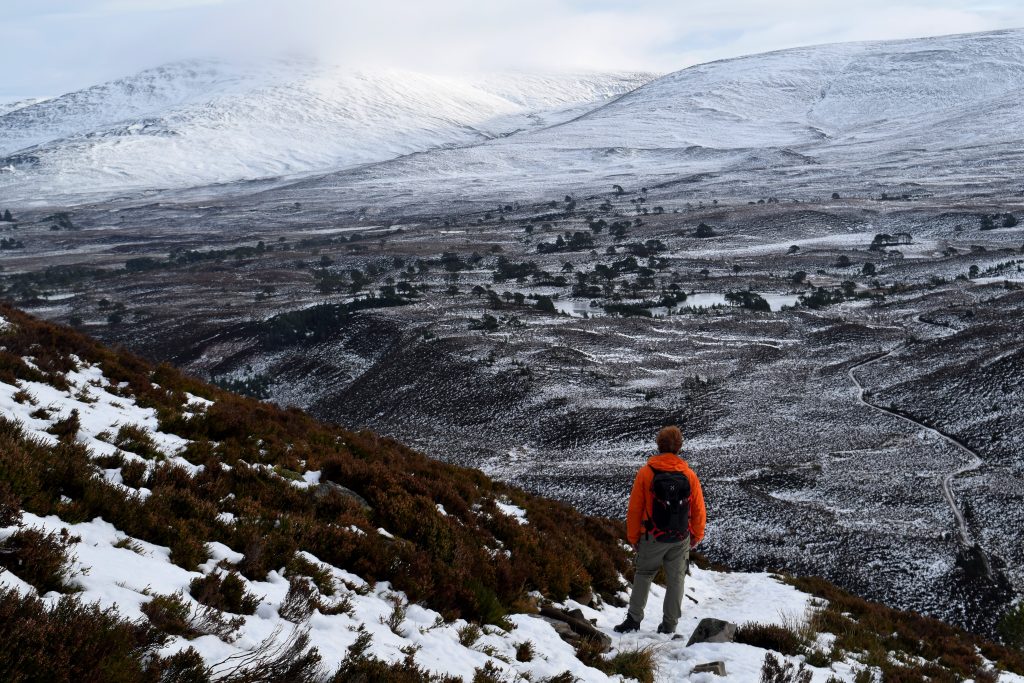Our glorious country has it all from steep cliffs and beautiful rugged mountains to dark, foggy moors, to whirling rivers and treacherous bays. Hiking through this unpredictable terrain is tricky enough, though full of satisfaction. But it’s even more difficult and beautiful when winter is here. So how can you make the most out of your hike? Well, you’re on the right page! I’ve squeezed my brain to give you all my tips for those planning to hike in winter.
1. Make sure the weather is on your side
We all know how the weather tends to be in this part of the globe. There’s not much sun, and even the sun does decide to pop it’s head out, it can start raining, or snowing suddenly! So check the weather forecast in advance to make sure you’re dressed appropriately and ready to face the elements!
That goes double for a hike that lasts longer, but also important even for a few-hours-long backcountry walk. A rainproof jacket, waterproof shoes and a water resistant backpack will be your most treasured possessions. Having good weather means an even better hike, right?
2. Understand where you’re going
Planning to hike in winter could find you wandering through a pine forest, heading into beautiful snow covered valleys or up icy mountains. All terrains need not only different endurance levels but also different equipment. Understanding the environment, terrain and area you are hiking in is so important.
Don’t set off on a climb you know you can’t handle. Bring enough safety gear to make sure you’re not caught off guard. Knowing more about the fauna, flora, terrain types and climate will also help you consider the opportunities along with the risks, so you can take the best photos ever and have the best time!
3. Make sure you have all the necessary equipment
Speaking of gear for risky situations, to hike in winter, you’ll definitely need rope, tarp and a few carabiners for emergency situations. A first aid kit should always be in your backpack when hiking, but in winter, you’ll want to make sure you have emergency blankets and a biffy bag. Sprains and blisters are the most common hiking accidents, but being aware of how the cold affects you when you hike in winter, is essential.
Apart from that, you’ll need a few more batteries than you would normally take along because batteries run out faster in colder, rainier weather. But if you do further research on well-documented websites like HikingMastery, you’ll find plenty of essential gear you’ll want to consider packing into your bag!
4. Layer up and take back ups!
Get your winter clothes out of the wardrobe if you want to have a safe, fun hike despite the cold or possible rain. The best advice for hikers is to wear layers, or pack extras so they can easily adjust their clothing to the weather conditions and terrain.
The first layer, the one that’s closest to your skin, should be made from a moisture-wicking and insulating material. If it’s breathable, you’ve won the jackpot. Merino wool is the best for this weather because it also keeps the body temperature constant, but you can also consider polyester clothes. But cotton, should really be left at home!
Merino or Polyester can also be used for the second layer, as well as a fleece sweater. The third layer should be a waterproof jacket, which you can just carry in your backpack until you need it. Please god, leave the jeans at home, this is possibly the worst material to wear for a hike in winter. If they get wet, they are heavy, cold and massively uncomfortable.
5. Wear the appropriate shoes
The perfect winter shoes to hike in aren’t that hard to find, but you should make sure you get something right for the terrain, weather, and type of hike. For instance, an easier hike along the coastline is dry weather can easily be handled with good sports shoes.
On the other hand, if you’re climbing forested hills, roaming for hours through rocky valleys or plashy moors, you need amazing ankle support. That’s why you’ll want a sturdy pair of hiking boots that are at least ankle-high, if not paired with some waders to make sure water doesn’t get inside. If you’re heading high up into the mountains, alpine boots and crampons could be essential!
Whatever you might choose in terms of footwear, there are some things to take into account. You should make sure you have a comfortable inner sole that provides enough cushioning. Toe and heel reinforcements are a must for steep ascents and descents, while a rubber outsole can be a lifesaver on rocky terrain. The right shoes are pretty much the most important thing to have on a hike in winter.
6. Don’t forget sun protection
Yes, you could laugh at the fact it’s winter in the UK, and the sky is filled with a dense layer of clouds. But that doesn’t mean the UV rays can’t find their way to your sensitive skin! Especially if there is snow or water about. Sun cream is essential, there’s nothing worse than a sunburnt face after all!
Sun cream is even more important if the weather is actually sunny! Sunglasses in winter conditions will help fight the glare. Trust me, the day you’ll forget them is when you need them, so I always pack them in my backpack!
7. Plan your hike in winter & keep an eye on the clock
How many of us have ventured out on a hike only to realise the sun is setting and the summit is still an hour away? Me! It’s so easy to forget just how short the days are in winter, especially when you’re having a great time or head out on a spontaneous adventure. But it’s important to keep an eye on the clock. Heading down a mountain in the dark, with no light is not fun, it’s scary. This is where accidents could happen easily, so always be prepared and have a head torch in your bag and a watch on your wrist.
So just remember that the sundown time is around 4:30 p.m! Which means you’ll need to plan shorter hikes or much earlier mornings. If you’re spending the night, you should also make sure you get to the campsite with plenty of time to spare in order to set up your tent! If you want to hike in winter you have to plan.
8. Don’t push yourself
The most important thing is to have fun! So take into account your fitness level, don’t try to do something completely out of the ordinary and stop for frequent breaks. After all, you’re hiking to enjoy the great outdoors, not to win a competition.
You should also eat plenty of calories and drink enough water. It’s really easy to forget about that because of the effort you’re doing, and you might not even feel thirsty when the temperatures are low, but you do need water! And chocolate.
So what are you waiting for? With these tips now fresh in your mind it’s time to plan your hike in winter! Scotland has incredible day and multi trip hikes for those brave enough to camp it out in winter!
Do you have any extra tips for planning a hike in winter?
Author Bio:
Rebecca lives in USA, but loves hiking all over the world. Her favorite is Everest Base Camp Trek in Nepal. It usually takes 16 days, but she likes to slow down, enjoy mountains, company of other adventurers and take more pictures, so it took her 28 days last time. Another of her passion is the ocean, so all short and long hikes along the ocean shore bring a lot of joy. She also writes for HikingMastery.com



